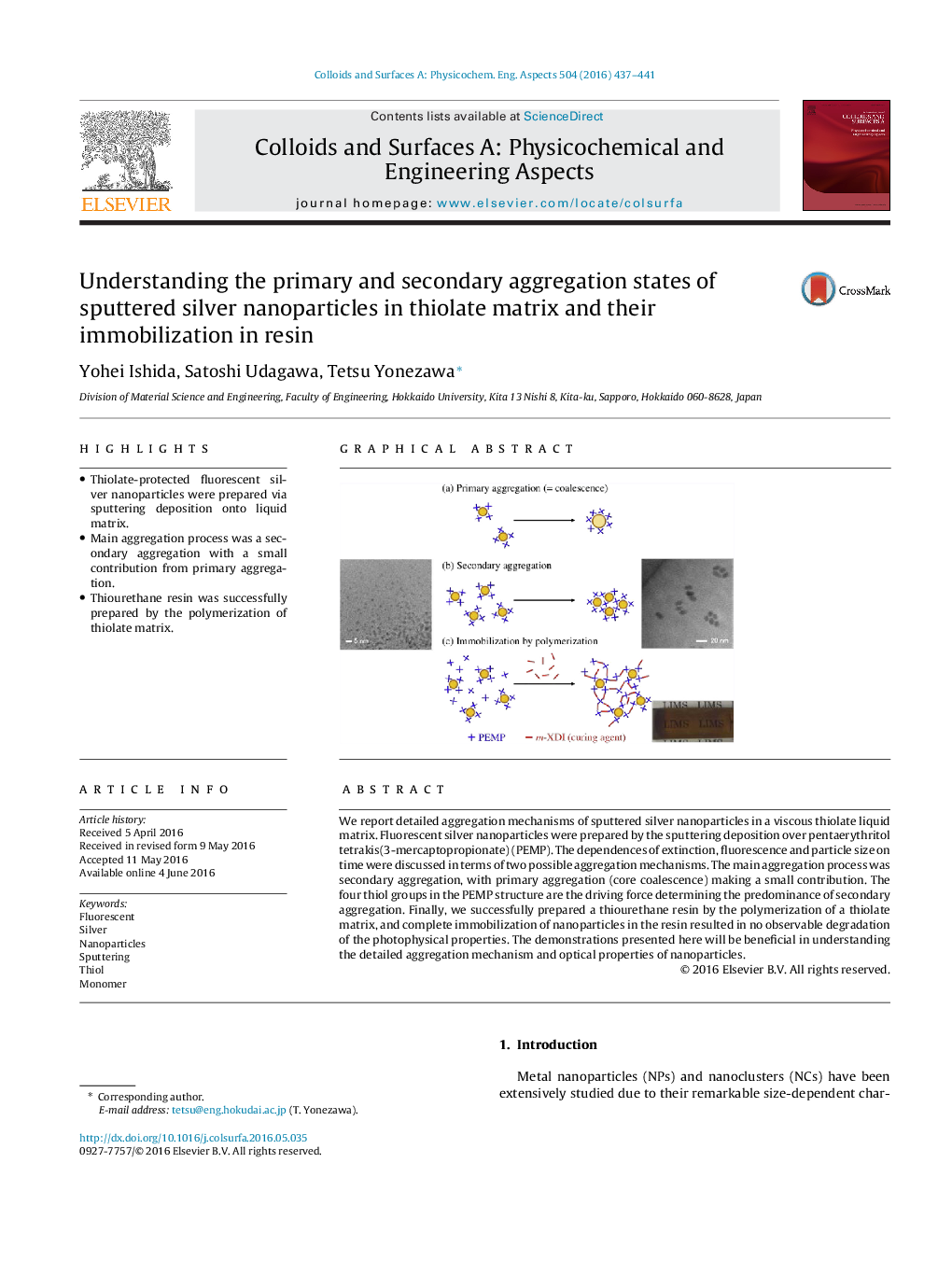| Article ID | Journal | Published Year | Pages | File Type |
|---|---|---|---|---|
| 591482 | Colloids and Surfaces A: Physicochemical and Engineering Aspects | 2016 | 5 Pages |
•Thiolate-protected fluorescent silver nanoparticles were prepared via sputtering deposition onto liquid matrix.•Main aggregation process was a secondary aggregation with a small contribution from primary aggregation.•Thiourethane resin was successfully prepared by the polymerization of thiolate matrix.
We report detailed aggregation mechanisms of sputtered silver nanoparticles in a viscous thiolate liquid matrix. Fluorescent silver nanoparticles were prepared by the sputtering deposition over pentaerythritol tetrakis(3-mercaptopropionate) (PEMP). The dependences of extinction, fluorescence and particle size on time were discussed in terms of two possible aggregation mechanisms. The main aggregation process was secondary aggregation, with primary aggregation (core coalescence) making a small contribution. The four thiol groups in the PEMP structure are the driving force determining the predominance of secondary aggregation. Finally, we successfully prepared a thiourethane resin by the polymerization of a thiolate matrix, and complete immobilization of nanoparticles in the resin resulted in no observable degradation of the photophysical properties. The demonstrations presented here will be beneficial in understanding the detailed aggregation mechanism and optical properties of nanoparticles.
Graphical abstractFigure optionsDownload full-size imageDownload as PowerPoint slide
